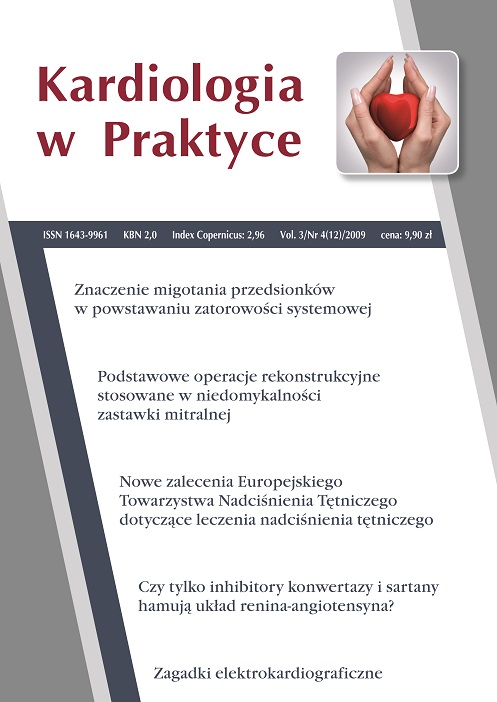New scientific statement of the European Society of Hypertension on the management of hypertension Review article
Main Article Content
Abstract
The European Society of Hypertension has recently published a scientific statement updating its 2007 guidelines on the management of hypertension. This document summarizes the most important data published within the last two years that warrant some changes and additions in the treatment guidelines, including new data regarding the importance of target organ damage in total cardiovascular risk stratification, new analyses on threshold and target blood pressure values during treatment, the choice of antihypertensive drugs, in particular regarding the use of beta-blockers as first-line therapy, the importance of combined therapy and the use of fixed-dose co mbinations in the treatment of hypertension, and the approach to treatment in special populations, including the very elderly in whom convincing data showing outcome benefits of antihypertensive therapy have been recently published.
Downloads
Article Details

This work is licensed under a Creative Commons Attribution-NonCommercial-NoDerivatives 4.0 International License.
Copyright: © Medical Education sp. z o.o. This is an Open Access article distributed under the terms of the Attribution-NonCommercial 4.0 International (CC BY-NC 4.0). License (https://creativecommons.org/licenses/by-nc/4.0/), allowing third parties to copy and redistribute the material in any medium or format and to remix, transform, and build upon the material, provided the original work is properly cited and states its license.
Address reprint requests to: Medical Education, Marcin Kuźma (marcin.kuzma@mededu.pl)
References
2. Guidelines Committee. 2007 Guidelines for the Management of Arterial Hypertension The Task Force for Management of Arterial Hypertension of the European Society of Hypertension (ESH) and of the European Society of Cardiology (ESC). J. Hypertens 2007, 25: 1105-1187.
3. Zanchetti A., Grassi G., Mancia G.: When should antihypertensive drug treatment be initiated and to what levels should systolic blood pressure be lowered? A critical reappraisal. J. Hypertens. 2009, 27: 923-934.
4. Zanchetti A.: Bottom blood pressure or bottom cardiovascular risk? How far can cardiovascular risk be reduced? J. Hypertens. 2009, 27: 1509-1520.
5. Law M.R., Morris J.K., Wald N.J.: Use of blood pressure lowering drugs in the prevention of cardiovascular disease: meta-analysis of 147 randomised trials in the context of expectations from prospective epidemiological studies. BMJ 2009, 338: 1665-1683.
6. Bangalore S., Sawhney S., Messerli F.H.: Relation of beta-blocker-induced heart rate lowering and cardioprotection in hypertension. J. Am. Coll. Cardiol. 2008, 52: 1482-1489.
7. ADVANCE Collaborative Group. Effects of a fixed combination of perindopril and indapamide on macrovascular and microvascular outcomes in patients with type 2 diabetes mellitus (the ADVANCE trial): a randomised controlled trial. Lancet 2007, 370: 829-840.
8. Beckett N.S., Peters R., Fletcher A.E. et al.: Treatment of hypertension in patients 80 years of age or older. N. Engl. J. Med. 2008, 358: 1887-1898.
9. ONTARGET Investigators, Yusuf S., Teo K.K., Pogue J. et al.; Telmisartan, ramipril, or both in patients at high risk for vascular events. N. Engl. J. Med. 2008, 358: 1547-1559.
10. Jamerson K., Weber M.A., Bakris G.L. et al.: Benazepril plus amlodipine or hydrochlorothiazide for hypertension in high-risk patients. N. Engl. J. Med. 2008, 359: 2417-2428.

